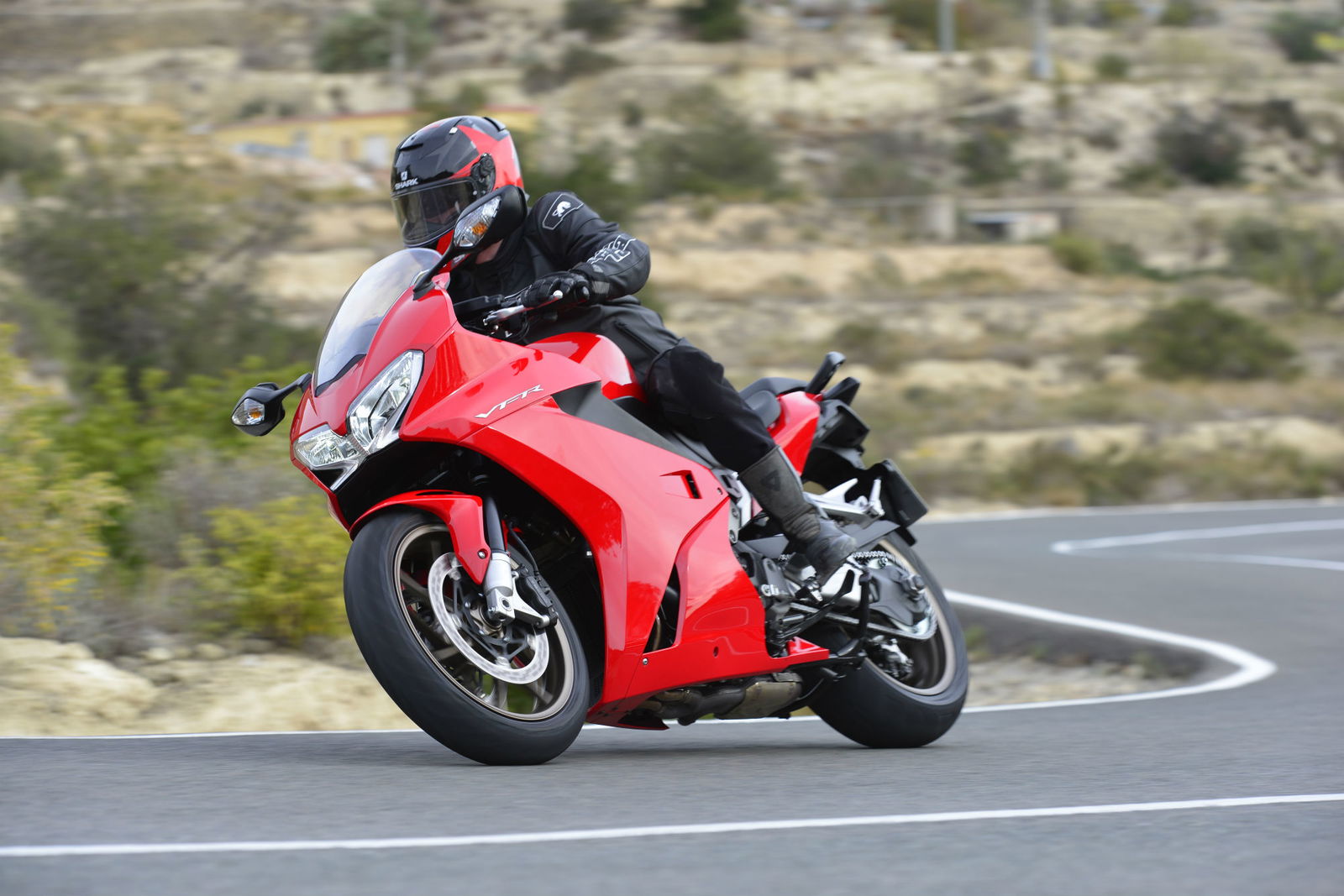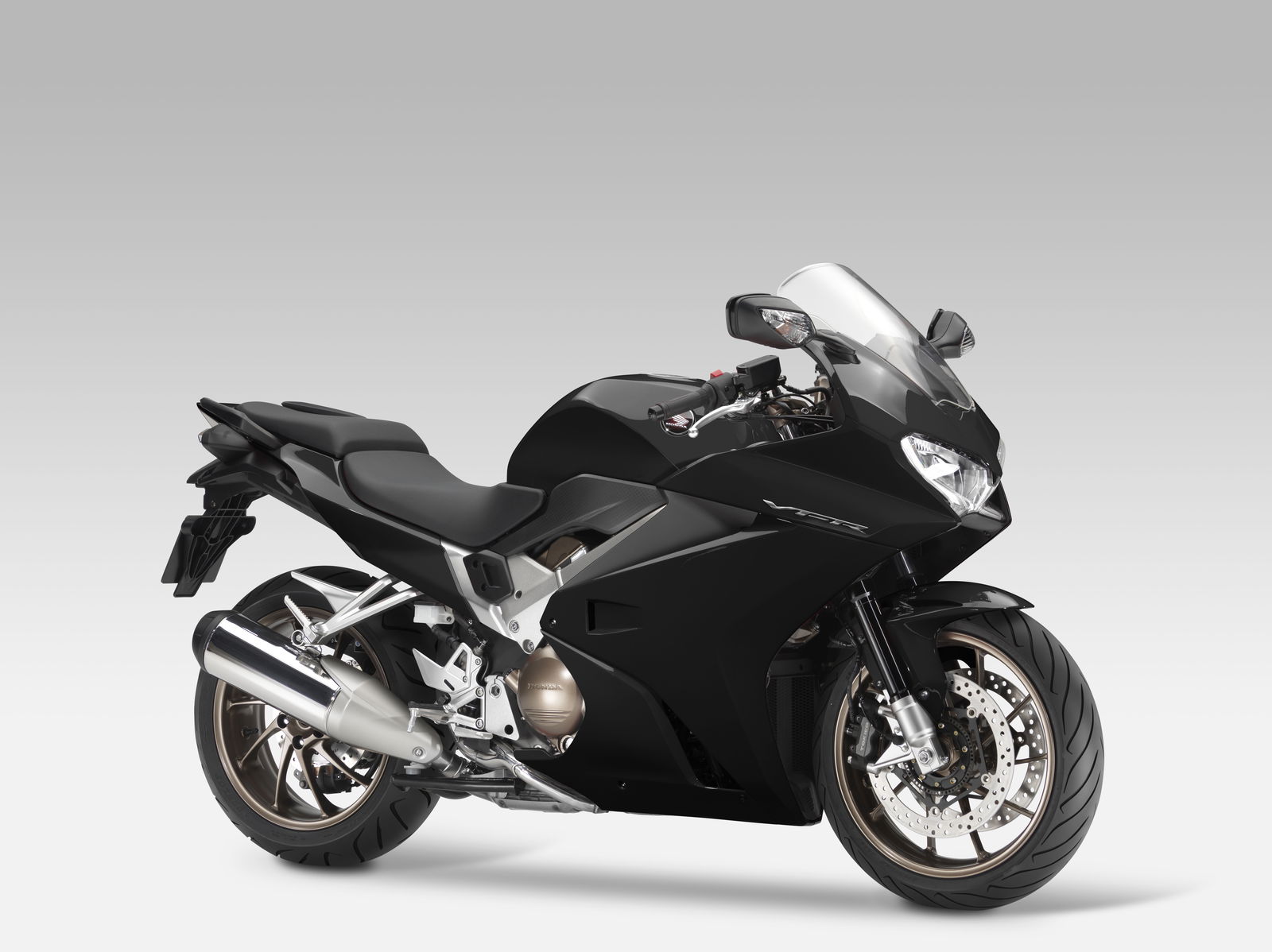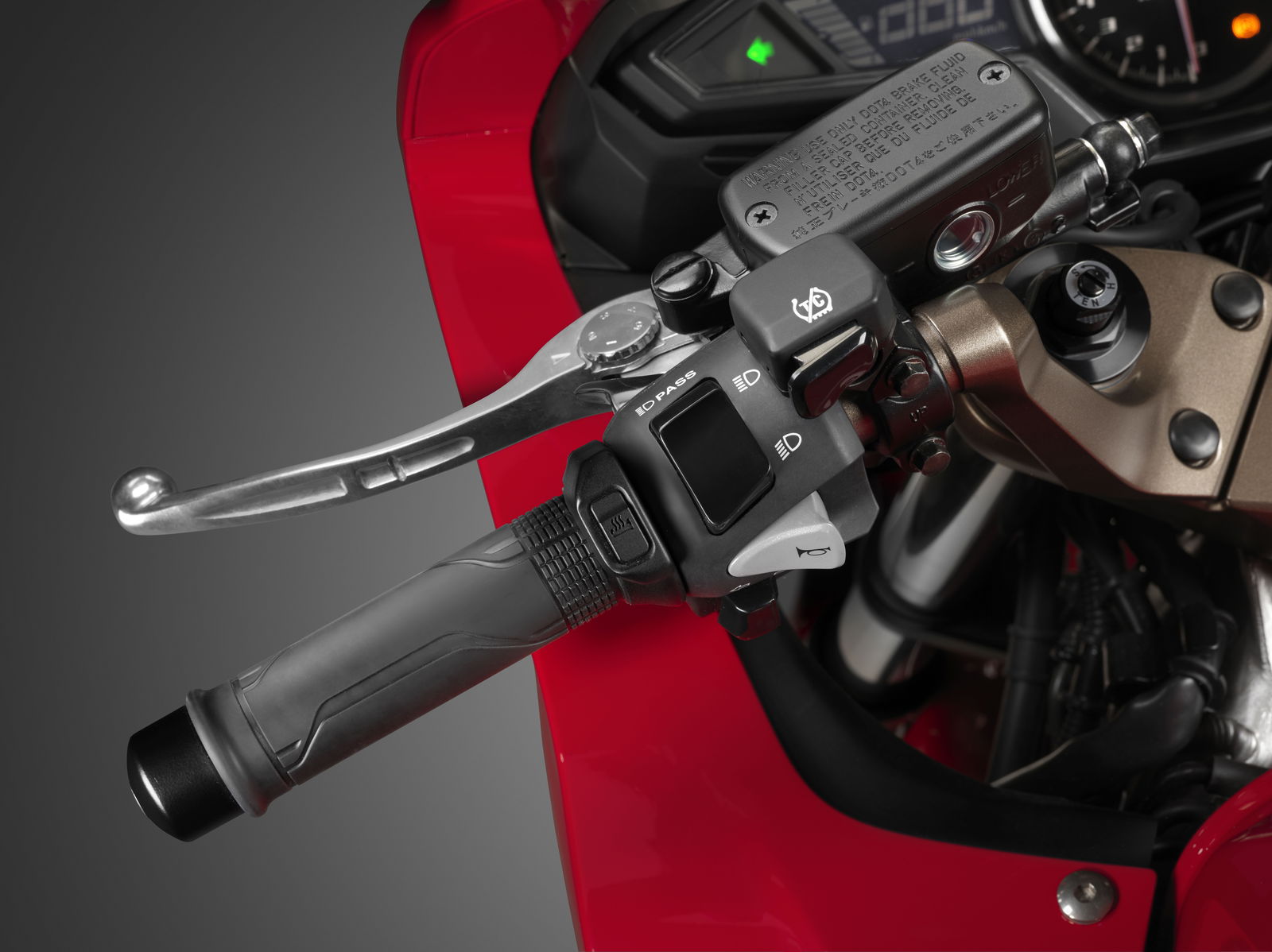First ride: 2014 Honda VFR800 review
VFR purists - this is the upgrade you’ve been waiting for


ANYONE with memories of motorcycling in the late Eighties will also remember the early Honda VFR750, cutting an elegant single-colour figure against a background of graphics-plastered bikes.
Its uncluttered styling and simple lines promised exhilaration without being boastful. It looked potent and mature.
It wasn’t only notable for its looks. In the launch year, 1986, Ron Haslam rode a stock VFR750 to third place in the Transatlantic Challenge at Donington Park.
In 28 years, the VFR has never strayed far from its furrow as the original sports tourer, although it went a bit cocky and NR750-esque in the Nineties, and some purist fans never embraced the 800 it evolved into.
But the latest version, the heavily revised 2014 VFR800, seems more than ever to echo the under-stated self-assurance of early models.
It's so sleek there are few lines for the eye to follow. It's like looking at a pool of red. Or black or white if you're mad enough to choose another colour. A pool you want to dive into.
The changes go well beyond looks. According to Honda, almost everything except the main frame and engine has been replaced for 2014.
It’s got new suspension at both ends. The fork is adjustable for preload and compression damping, the shock for rebound and preload, with a remote preload adjuster.
It’s got new wheels with thinner spokes, and a new brace on top of the single-sided swing-arm to add stiffness.
The steel sub-frame is now die-cast aluminium, saving 2kg. The twin under-seat pipes have been replaced by a single can on the right, saving another 5kg.
It’s got heated grips, traction control, clever new self-cancelling indicators, a new dash and height-adjustable pillion and rider seats.
It’s practically an all-new model, and not before time. The last major updates came 12 years ago. Since the launch of the bigger VFR1200 in 2009, Honda has been pushing that as the flagship of the range. With sales of its middleweight sibling slipping, it was time to revive a legend.
So can it fill the giant shoes of its predecessors? Or will the weight of expectation prove too much?
What’s clear from about 100 yards of the new bike is the class it seems to exude. It could be permanently bathed in soft lighting and it would barely add to the effect.
Every piece of bodywork fits together with every other piece with other-worldly precision. The gaps between them (“shut lines”, a Honda man informed me at the launch in Alicante), are hair-thin and perfectly uniform.
In the instrument panel, the usual digital arrangement of black-on-grey is inverted to make grey digits on black, a simple change that nevertheless lends to the impression this is special.
Even factory-fitted heated grips usually look like an afterthought. Not on the VFR800, where the instrument panel tells you what heating level they are set to. It also tells you your fuel consumption, average speed and what gear you’re in.
With the 782cc engine idling in neutral, the temptation to blip the throttle and make the needle rise on the big central rev counter, unleashing a bit of V-four howl, is irresistible.
On twisty mountain roads, there's enough torque to drive out of corners from 4,000rpm. At 7,000, the howl gets louder as Honda’s VTEC system switches from two valves per cylinder to four.
Early versions of VTEC-equipped VFRs met with criticism of the sudden step-up in power. It might be fine if you’re nailing it through the gears, but hovering around that area in the rev range, some found it jerky and annoying.
Now the step-up is perceptible but not dramatic. There’s no surge exactly. The engine roars more loudly, power picks up smoothly and the needle climbs with renewed enthusiasm to the red line, just below 12,000rpm.
It’s addictive. As the change in engine note arrives, you’re reminded that VFR stands for ‘V-Four Racing’.
All the bikes given to journalists were fitted with a quick-shifter, an option with price to be confirmed. The sensation of clutch-less up-shifts with the throttle held wide open is fun, but it’s the noise that really makes it. A succession of VTEC howls punctuated by almost instant gear changes makes you feel like you are Ron Haslam in the 1986 Transatlantic.
Then a looming corner tightens up and you remember that you are not Ron Haslam.
Not that the VFR800 doesn’t cope well. The new brakes, which include ABS as standard and are not front-and-rear linked like many Honda’s of the past, are powerful and precise, delivering all the stopping force your fingers ask and no more. Braking into a corner, the forks retain enough travel in reserve for the bike to remain composed as you let off and tip in.
For long distance touring, the riding position may be a tad sporty for some, the reach to the bars a little far, putting too much weight on the arms. Personally I don’t mind it. It’s part of what gives the VFR a sense of purpose, part of its spirit. I would happily ride it to Timbuktu in a day, park it in the sand and spend the evening standing and looking at it.
Purist fans of the original VFR750 have tended to reject the later 800s, with their hoity-toity variable valve timing. To me, this new 800 seems everything the middleweight VFR should be: a true sports-tourer that’s going to be as handy on a track day as a week-long ride to the Algarve.
As always, I can find things to complain about. Earlier I called the self-cancelling indicators ‘clever’, and they are, in that they use difference in front and rear wheel speed to detect when you’ve finished taking a corner. I’m just not sure they work that well in practice. Sometimes the indicator cancelled earlier than I wanted, sometimes later. If you have to override it, what’s the point?
The traction control button is on a box on the left bar which, unlike the heated grips, does look like an afterthought. It has two settings, on and off, and to its credit it’s very easy to switch between them. No annoying need to close the throttle, as with many systems. You just hold the button for a couple of seconds and a warning on the instrument panel tells you it’s off.
The traction control system works by retarding the ignition and gives smoother intervention without using throttle-by-wire, according to Honda. I’ll be honest: on the launch ride I was not aware of it intervening at any point.
Just beneath the tail unit are slightly obtrusive mounting points for panniers, in black. No doubt they look better than a conventional pannier frame. My criticism is that if you don’t want luggage, you don’t have to have a pannier frame. The latest mounting system is permanent and, without panniers fitted, it looks a bit like something is missing.
Adjusting the rider’s seat height requires a spanner and at the higher setting the gap between seat and bodywork looks a little too big.
These are minor points.
Overall the impression remains one of class, beauty and potency. An optional pillion seat cowl fits with the same precision found everywhere. There’s already a good-sized compartment under the pillion seat, with enough space for waterproofs. With the seat swapped for the cowl, there's even more room.
The new VFR feels grown up but still exciting. Sophisticated, accomplished, exhilarating, sporty, elegant.
All the things early VFR750s represented.
If you’re an early VFR purist, this could be the upgrade you’ve been waiting for.
Model tested: Honda VFR800
Price: £10,499
Power: 105hp
Torque: 55.3lbft
Kerb weight: 242kg
Seat height: 789mm/809mm
Colours: red, white, metallic black
Availability: May
Read our 2006 Honda VFR800 first-ride review













